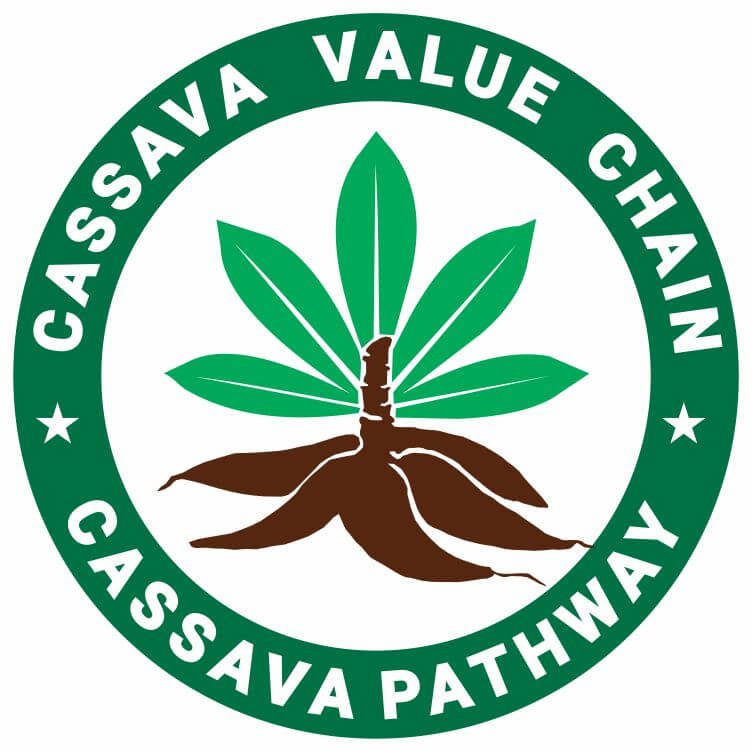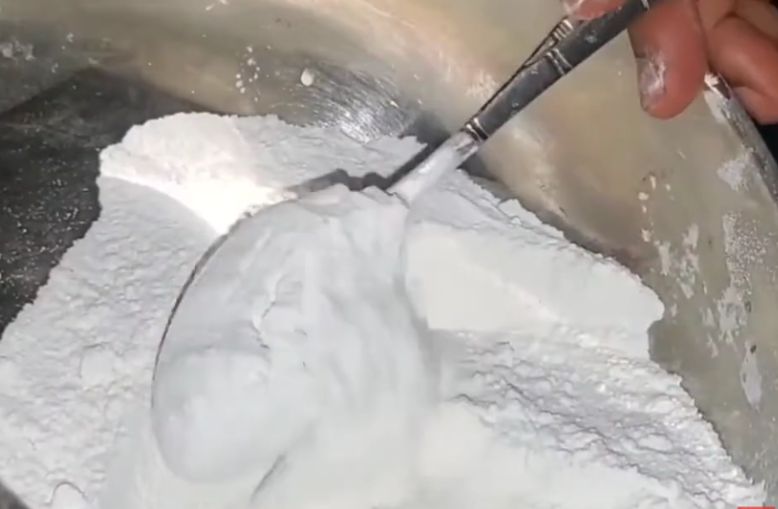Modified cassava flour is transforming food and industry. From gluten-free baking to industrial applications, its versatility makes it indispensable. Discover how this ingredient is changing the game!
Cassava has long been a staple crop in many parts of the world, particularly in Africa, Asia, and Latin America.
As a Nigerian who grew up surrounded by cassava farms, I remember watching my grandmother skillfully peel, soak, and process cassava into different forms, garri, fufu, and flour.
At the time, we never imagined that cassava could be modified to serve so many advanced uses beyond traditional meals.
Today, modified cassava flour (Mocaf) is revolutionizing both the food industry and various industrial applications, making it an essential ingredient for gluten-free diets and sustainable manufacturing processes.
Related: FODMAP: How Does the Gut Handle Cassava Flour?
Table of Contents
- What is Modified Cassava Flour?
- How is Modified Cassava Flour Different from Regular Cassava Flour?
- How is Modified Cassava Flour Made?
- Uses and Applications of Modified Cassava Flour
- Nutritional Profile and Health Benefits
- Modified Cassava Flour vs. Other Gluten-Free Flours
- How to Use Modified Cassava Flour in Cooking and Baking
- Where to Buy Modified Cassava Flour
- Conclusion
What is Modified Cassava Flour?
Modified cassava flour also called Mocaf is a processed form of cassava flour that has been altered to enhance its functional properties. Unlike regular cassava flour, which is simply dried and milled cassava root, undergoes modification through enzymatic, chemical, or physical treatments to improve its texture, stability, and usability.
These modifications make it an excellent alternative to wheat flour, starches, and other thickeners in various industries.
Related: Does Cassava Flour Have Cyanide?
How is Modified Cassava Flour Different from Regular Cassava Flour?
- Improved Stability: Mocaf has better resistance to heat, moisture, and pH changes, making it ideal for food processing.
- Enhanced Thickening Ability: It provides a more consistent and reliable thickening effect in sauces, soups, and baking.
- Reduced Stickiness: Regular cassava flour can become overly sticky when mixed with water, but Mocaf has better handling properties.
- Extended Shelf Life: Due to its modified structure, it lasts longer and resists spoilage.
Related: How to Produce Cassava Flour
How is Modified Cassava Flour Made?
The production of Mocaf involves specialized techniques that alter its natural structure to enhance its functionality for food and industrial applications.
Here are the key modification methods:
Heat Treatment
This process exposes cassava flour to controlled high temperatures, restructuring its starch composition.
The result? Improved stability, lower moisture retention, and better performance in baking and processed foods.
Fermentation
A time-honored method in African and Asian cultures, fermentation naturally breaks down complex carbohydrates, improving digestibility and enhancing its use as a thickening and baking agent.
Cross-Linking
By chemically reinforcing starch bonds, this process increases resistance to heat, shear, and acidic conditions, ideal for food processing and industrial applications like coatings and adhesives.
Acid or Enzyme Treatment
Targeted acids or enzymes modify starch molecules, creating flour with improved solubility and binding properties.
This makes Mocaf valuable in industries such as biodegradable plastics, paper manufacturing, and pharmaceuticals.
These modification techniques expand cassava flour’s versatility, making it a powerhouse ingredient across multiple sectors. ingredient across multiple sectors.
Related: Is Cassava Flour Good for Keto?
Uses and Applications of Modified Cassava Flour
Cassava flour that is modified is a highly versatile ingredient with applications spanning both the food industry and industrial manufacturing.
1. Food Industry Applications
- Gluten-Free Baking: Mocaf is widely used in breads, cakes, pancakes, and pasta as a gluten-free alternative to wheat flour.
- Thickening Agent: It improves the consistency of soups, gravies, and sauces without altering flavor.
- Baby Food and Dietary Products: Due to its smooth texture and easy digestibility, Mocaf is an ideal ingredient in infant food and low-glycemic dietary products.
2. Industrial Applications
- Adhesives and Paper Industry: Mocaf is used as a binding agent in adhesives and paper coatings.
- Textile and Pharmaceutical Industry: It enhances fabric finishing and is used as a filler in drug production.
- Biodegradable Packaging: Given its starch-based structure, it is being explored as a sustainable alternative to plastic packaging.
Related: Are there Cassava Flour Substitutes?
Nutritional Profile and Health Benefits
Modified cassava flour retains most of the nutritional benefits of regular cassava flour while offering additional functional advantages.
- Rich in Resistant Starch: Promotes gut health and aids digestion.
- Gluten-Free: Ideal for people with celiac disease or gluten intolerance.
- Low Glycemic Index: Helps manage blood sugar levels.
- Easily Digestible: Suitable for children and individuals with digestive issues.
Modified Cassava Flour vs. Other Gluten-Free Flours
With the rising demand for gluten-free alternatives, how does modified cassava flour compare to other popular options?
| Feature | Modified Cassava Flour | Tapioca Starch | Rice Flour | Potato Starch |
|---|---|---|---|---|
| Gluten-Free | Yes | Yes | Yes | Yes |
| Thickening Ability | High | Medium | Low | High |
| Baking Performance | Excellent | Poor | Good | Moderate |
| Nutritional Value | Moderate | Low | Moderate | Low |
| Best Use | Baking, thickening | Thickening | Baking, frying | Thickening, frying |
How to Use Modified Cassava Flour in Cooking and Baking
Using Mocaf in recipes requires some adjustments to achieve the best results. Here are a few tips:
- For Breads & Cakes: Substitute wheat flour 1:1 or mix with other gluten-free flours for better texture.
- For Thickening: Use 1 tablespoon of Mocaf for every cup of liquid.
- For Frying: Mix Mocaf with rice flour or cornstarch for a crispier texture.
Common Challenges and Solutions
- Too Dense in Baking?: Add more liquid or eggs to improve texture.
- Sticky Dough?: Reduce water content slightly and add a small amount of oil.
Where to Buy Modified Cassava Flour
Cassava flour that is modified is becoming more widely available in supermarkets, specialty health stores, and online marketplaces.
Popular brands include:
- Nigeria & West Africa: Local agricultural cooperatives and online platforms like Jumia.
- USA & Europe: Amazon, Walmart, and specialty food retailers.
- Asia & Latin America: Local markets and health food stores.
When purchasing, look for:
- Non-GMO certification
- No added preservatives
- Clearly labeled modification process
Conclusion
Modified cassava flour is more than just a gluten-free alternative, it is a functional, nutritious, and sustainable ingredient that has found its way into both kitchens and industries worldwide.
Whether you’re looking for a healthier baking option, a thickener for soups, or an industrial starch substitute, Mocaf offers versatility and reliability.
As the demand for gluten-free and sustainable products grows, modified cassava flour is set to play an even bigger role in the future of food and industry.
If you’ve ever tried using modified cassava flour in your cooking or business, share your experience in the comments below!
References

Chimeremeze Emeh is a writer and researcher passionate about Africa’s most transformative root crop—cassava. Through his work at cassavavaluechain.com, he explores the entire cassava industry, from cultivation and processing to its diverse applications in food, health, and industrial use.
He also writes for palmoilpalm.com, where he shares his extensive experience and deep-rooted knowledge of palm oil, covering red palm oil, palm kernel oil, and refined products. His work there reflects his lifelong connection to agriculture and his commitment to promoting sustainable value chains in Africa.
Driven by curiosity and purpose, Chimeremeze aims to shed light on how cassava continues to empower communities, strengthen food systems, and link traditional farming wisdom with modern innovation.

